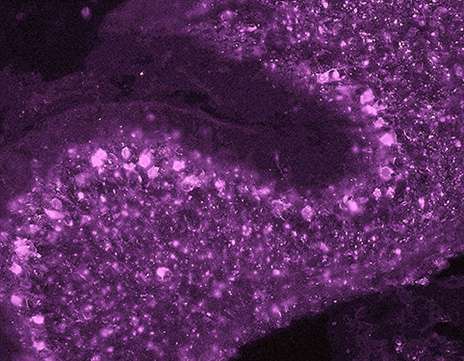Zika uses axons to spread havoc in central nervous system

The Zika virus wreaks havoc in the central nervous system well after the initial stages of pregnancy and can use long axon projections of neurons to spread, a new Yale School of Medicine study suggests.
The researchers tracked infections in the brains of newborn mice, the equivalent developmentally to a second trimester fetus in human pregnancy. Zika's ability to stunt brain development and cause microcephaly soon after conception is well documented. The new study suggests the virus can continue to spread to areas of the brain such as the visual system in later brain development.
"And within seven days of infection outside the brain, we see evidence of infection in most areas of the brain," said Anthony van den Pol, professor of neurosurgery and lead author of the study published Jan. 25 in the Journal of Neuroscience. The study suggests that the virus may also cause other neurological problems that would be more difficult to diagnose than microcephaly, he said.
More information: Anthony N. van den Pol et al. Zika virus targeting in the developing brain, The Journal of Neuroscience (2017). DOI: 10.1523/JNEUROSCI.3124-16.2017
















